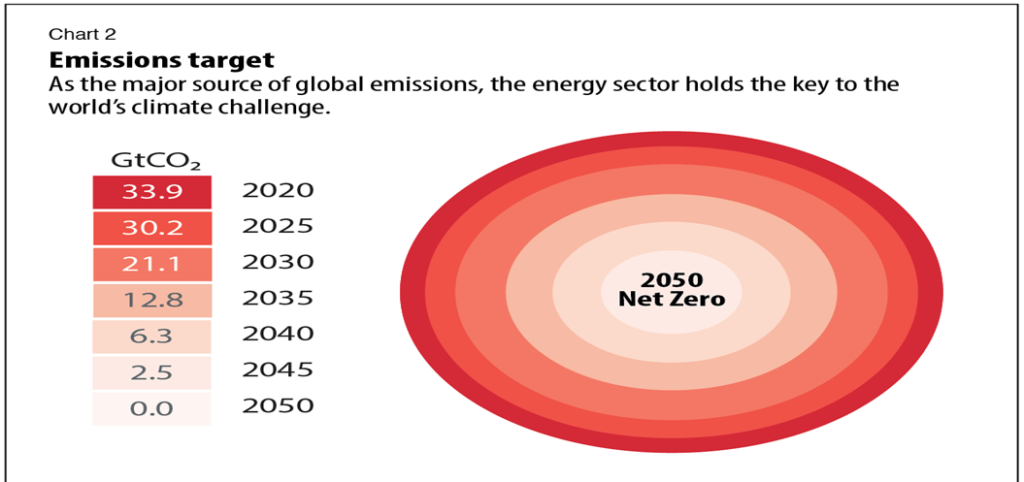The recent G7 meeting in Sapporo, Japan, focused on climate, energy, and environmental policy. The discussions centered around renewable fuel sources, energy security, and the urgency following Russia’s invasion of Ukraine. The G7 countries, accounting for 40% of the world’s economic activity and a quarter of global carbon emissions, agreed on the following key highlights:
Carbon-free electricity production by 2035:
The G7 countries are committed to working towards ensuring carbon-free electricity production by 2035 and “accelerating” the phase-out of coal. They also agreed to accelerate solar and wind energy investments to produce 1,000 gigawatts (GW) by 2030 from solar power and 150 GW of wind power from off-shore platforms.

Removal of Fossil Fuel Subsidies:
The G7 countries reaffirmed their commitment to the elimination of inefficient fossil fuel subsidies by 2025.
Net zero in energy systems by 2050:
The G7 members agreed to accelerate “the phase-out of unabated fossil fuels” to achieve net zero in energy systems by 2050.
However, emerging markets and developing economies now account for more than two-thirds of global carbon emissions, and countries like India and China are significantly dependent on coal for electricity.

Challenges in Phasing out coal in India:
Coal is the primary energy contributor, with a 57% share of India’s energy mix, and coal demand is expected to not peak until the early 2030s. The phasing out of coal will come at a very high economic cost, and India has vast coal reserves that fuel the economy of states like Jharkhand and Orissa. The phasing out of coal will lead to job losses and affect the tax revenue generated by the coal industry.
India’s efforts:
- India has revised its Nationally Determined Contributions (NDCs) to commit to reducing emissions intensity of GDP by at least 45% by 2030 from 2005 levels.
- India plans to ensure that at least 50% of installed electricity generation capacity in 2030 is based on non-fossil fuel-based sources.
- The country aims to increase non-fossil energy capacity to 500 GW by 2030 and reduce total projected carbon emissions by 1 billion tonnes by 2030.
- India has launched several programs such as the Pradhan Mantri Ujjwala Yojana, Hydrogen Energy Mission, E-Vehicle, Vehicle Scrapping Policy, Perform, Achieve and Trade (PAT), National Solar Mission (NSM), Pradhan Mantri Kisan Urja Suraksha evam Utthaan Mahabhiyan (PM-KUSUM), Solar Parks Scheme, Green Energy Corridor (GEC), International Solar Alliance (ISA), National Action Plan on Climate Change, National Clean Air Programme (NCAP), and National Biofuel Policy, among others.
- India aims to achieve net-zero carbon emissions by 2070.
Why In News
Following Russia’s invasion of Ukraine, renewable fuel sources and energy security have become increasingly urgent topics, as discussed during the two-day meetings on climate, energy, and environmental policy in the northern Japanese city of Sapporo attended by G7 countries.
MCQs about Carbon Emissions and their Global Impact
-
What is the main reason for the lack of progress in climate talks?
A. Lack of political will
B. Differences in economic and political systems
C. Insufficient scientific knowledge
D. Lack of cooperation from developing nations
-
What is the Paris Agreement?
A. A global treaty to address climate change
B. A regional agreement to reduce greenhouse gas emissions
C. An initiative to promote renewable energy
D. A program to support climate adaptation in developing countries
-
What is the main challenge facing the global transition to renewable energy?
A. The high cost of renewable energy technologies
B. The limited availability of renewable energy sources
C. The lack of political support for renewable energy
D. The intermittent nature of renewable energy generation
-
What is the role of developing countries in global climate action ?
A. Developing countries have no role in global climate action
B. Developing countries are responsible for most greenhouse gas emissions
C. Developing countries are exempt from emissions reduction targets
D. Developing countries play a crucial role in global climate action
Boost up your confidence by appearing our Weekly Current Affairs Multiple Choice Questions
![]()


